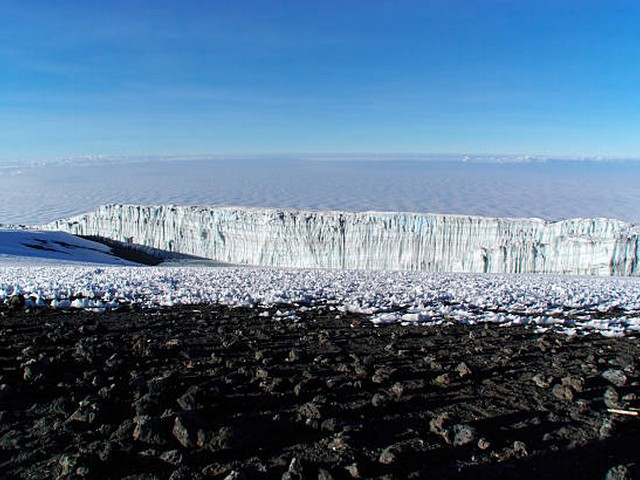Your Ultimate Guide to Kilimanjaro Trekking Adventure Preparation
Embarking on a trekking adventure up Mount Kilimanjaro is not merely a journey through some of Tanzania's most stunning landscapes; it is an exploration into the very heart of your own spirit and determination. At the Kilimanjaro Centre for Trekking and Ecotourism (KCTE), we understand that preparing for such an adventure can seem daunting. However, with the right guidance and preparation, reaching the summit of Africa's highest peak becomes an achievable dream. This blog post will equip you with essential tips and insights to prepare for your Kilimanjaro trekking adventure, ensuring you have a memorable and safe climb. Let's start your journey to the roof of Africa!
Understanding Kilimanjaro: The Roof of Africa
Mount Kilimanjaro, standing proudly at 5,895 meters (19,341 feet), is not only Africa's tallest peak but also the world's highest free-standing mountain. Comprising three volcanic cones — Kibo, Mawenzi, and Shira — Kilimanjaro is a dormant volcano with a mesmerizing ecological system that transitions from lush rainforests to alpine meadows, and finally to a barren lunar landscape at the summit.
Why Prepare Adequately For Your Kilimanjaro Trek?
The journey to Uhuru Peak is thrilling yet challenging. Proper preparation not only enhances your chances of success but also ensures you enjoy the trek comfortably and safely. At KCTE, we believe that a well-prepared trekker is a successful and happy trekker.
Physical Preparation: Training Your Body
Start Early
Begin your training at least six months prior to your trek. Focus on cardiovascular fitness through activities like running, swimming, or cycling. Don't forget to include strength training, particularly for your legs and core, which you will rely on heavily during the climb.
Practice Hiking
Engage in regular hikes to familiarize your body with long walking durations, preferably on varied terrains. If possible, train on mountain trails to simulate the Kilimanjaro environment. Remember, it's also about training your feet to handle continuous walking.
Altitude Acclimatization
Since Kilimanjaro reaches considerably high elevations, acquaint your body with high altitude conditions if possible. If training at altitude isn't accessible, consider using an altitude training mask.
Mental Preparation: Strengthening Your Resolve
Set Realistic Expectations
Understand the physical and mental demands of the climb. Familiarize yourself with the day-to-day trekking realities by talking to past climbers or consulting with experts like us at KCTE.
Stay Positive and Patient
Mental endurance is as crucial as physical stamina. Practice mindfulness or meditation to enhance your mental resilience, crucial for those challenging days when the summit seems a world away.
Essential Gear: Packing Right for the Climb
Clothing
Layering is key. Prepare for all weather conditions by packing thermal base layers, a fleece jacket, a waterproof outer layer, and breathable trekking pants. Don't forget a warm hat, gloves, and good quality UV-protective sunglasses.
Footwear
Invest in a sturdy pair of waterproof trekking boots. Make sure they are well-broken-in to avoid blisters.
Other Essentials
A good quality sleeping bag suitable for low temperatures, a comfortable backpack, a water purification system, and a headlamp with extra batteries are all must-haves.
Choosing the Right Partner: Why KCTE?
At Kilimanjaro Centre for Trekking and Ecotourism, we offer expertly guided tours that are tailored to your fitness level and preferences. Our experienced guides are not only Kilimanjaro aficionados but are also trained in first aid and emergency procedures, ensuring your safety and comfort throughout the journey. We handle all logistical details, allowing you to focus fully on the experience itself.
What to Expect During Your Trek?
Route Options
We offer various routes such as the Marangu, Machame, Lemosho, and the Rongai, each offering unique landscapes and challenges. Depending on your experience and preference, we will help you choose the perfect route.
Daily Routine
Typically, you will trek for 5-7 hours daily, with ample rest breaks and time to enjoy the magnificent views. Evenings are spent at camp, where you can unwind and prepare for the next day's trek.
Summit Night
Summit night is the most demanding part of the trek. Prepare for an early start and several hours of trekking in colder conditions. Reaching Uhuru Peak as the sun rises is an unforgettable moment that rewards all your effort.
FAQs: Answering Your Top Questions
-
What is the best time to climb Kilimanjaro?
The best times are during the dry seasons, from late June to October and from late December to March. -
How fit do I need to be to climb Kilimanjaro?
While you don't need to be an elite athlete, a good level of fitness is required to comfortably manage the daily hikes and altitude changes. -
What is the success rate for Kilimanjaro climbers?
With KCTE, our clients enjoy a success rate of over 90%, thanks to our expert guides and comprehensive preparation process. -
How do I avoid altitude sickness?
Proper acclimatization, staying hydrated, and following a slow pace are key strategies; our guides are also adept at identifying and managing altitude sickness symptoms early.
Ready to Start Your Kilimanjaro Adventure?
Choosing the right partner for your Kilimanjaro trekking adventure can make all the difference. At Kilimanjaro Centre for Trekking and Ecotourism (KCTE), we provide not only expert guidance but also an immersive experience that respects and honors the natural beauty of Tanzania. Ready to conquer Kilimanjaro? Contact us today to book your adventure and take the first step towards standing atop the Roof of Africa!




